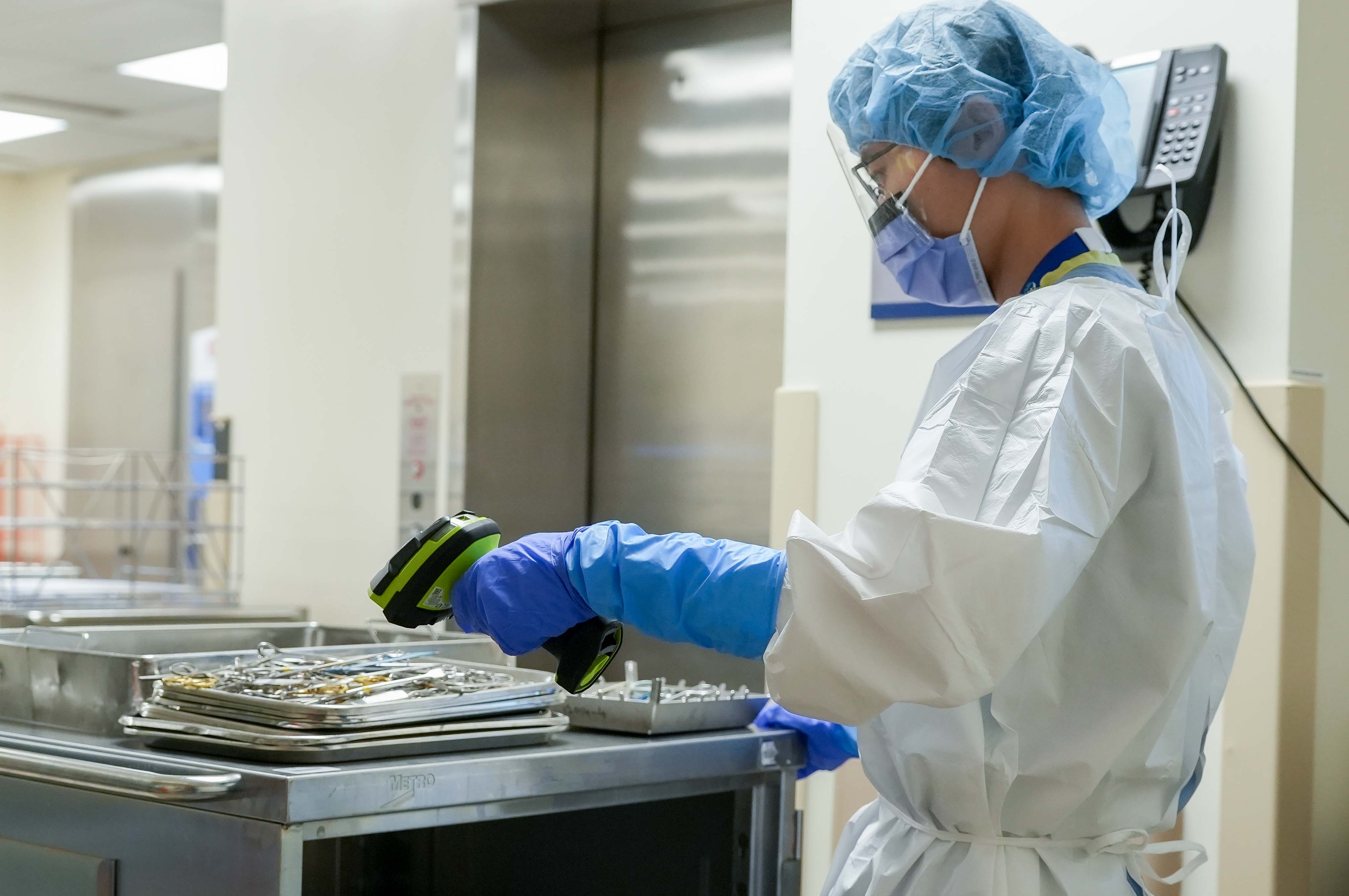Photo caption: Medical
Device Reprocessing Department staff at Oak Valley Health tracking tools using the Sterile
Processing Management system.
By: Michelle Lee Hoy, Senior Corporate Communications Specialist, Oak Valley Health
Oak Valley Health has taken a significant step toward smarter, safer, and more efficient surgical care by implementing the Sterile Processing Management (SPM) system from Steris—a globally recognized leader in infection prevention and surgical solutions. The SPM platform provides Oak Valley Health with real-time tracking, documentation, and management of surgical instruments throughout their lifecycle. This marks a major transformation in how surgical services are supported and optimized.
SPM is designed to digitally connect and streamline every stage of the medical device reprocessing workflow—from decontamination to sterilization, storage, and use in the operating room. Each instrument is scanned and tracked, creating a comprehensive digital footprint. This allows staff to know the exact location and status of any item at any given time, improving turnaround time, reducing errors, and supporting safer patient care.
“We can now see where we're overstocked, where we need more redundancy, and how to better support OR efficiency," says Megan Hipson, Manager, Medical Device Reprocessing Department (MDRD), Oak Valley Health. “It's not just about speed—it's about being smarter with how we manage our resources."

The system also integrates One Source, a centralized digital repository of manufacturers' Instructions for Use (IFUs). This feature ensures that reprocessing staff always have access to up-to-date, standardized cleaning and sterilization protocols. It's a major advancement over traditional paper methods or having to contact manufacturers, and will support Accreditation readiness while embedding best practices into daily workflows.
Already, the new system has helped the team quickly locate instrument sets for unexpected surgical cases, and it's laying the groundwork for long-term improvements. By automating previously manual processes, SPM unlocks new capabilities in data collection, quality reporting, and inventory management.
“SPM is helping us increase our efficiency, reduce unnecessary spending, and better align our processes to support timely, high-quality care for our patients," says Megan. “It's an investment that's going to pay off in multiple ways—financially, operationally, and most importantly, in better health outcomes."
In the near future, nursing staff in the OR will be able to log tray issues directly into SPM in real-time, creating a feedback loop for continuous quality improvement. Each OR workstation will be equipped with access to the system, allowing teams to check needs lists, view what's in queue, and search for instruments—helping bridge the gap between reprocessing and the point of care.

Investing in education and system sustainability
Oak Valley Health is also taking full advantage of its partnership with Steris through access to Steris University, an online learning platform with e-modules for reprocessing professionals. Staff have already begun training, and a $10,000 education grant is being used to support team members pursuing CSA certification or continuing education in areas such as infection prevention and MDRD best practices.
Looking ahead, the organization plans to enable Steris Connected Care, a complementary technology that provides real-time visibility into machine performance and maintenance needs. This ensures the hospital's sterilization equipment remains reliable and ready to meet clinical demands.
By implementing SPM, Oak Valley Health joins leading institutions across Canada in leveraging digital innovation to advance surgical safety, efficiency, and quality. This investment supports the organization's strategic vision for growth—ensuring it can scale services, strengthen operational resilience, and deliver seamless care across the surgical journey.